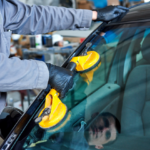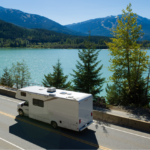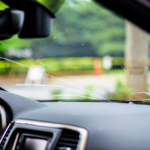The costs of car accidents can quickly and significantly add up. With current supply chain issues and a rise in the cost of goods, even minor repairs can be costly. But this is especially the case when someone is injured, or vehicles are seriously damaged. Paying the price for an accident out of pocket could amount to a substantial financial setback or even financial ruin. Fortunately, car insurance exists to protect us from this nightmare scenario.
So, what exactly is car insurance, and how does it work? Understanding car insurance empowers you to decide which coverages you should purchase for your car and lifestyle.
What is car insurance?
A car insurance policy is an agreement between you and an insurance company. It provides you with financial protection in the event of a car accident. If you’re found liable for another party’s injuries or damage to their property, your car insurance will kick in. A policy comprises different insurance coverages and protects you up to limits that you and your insurer agree to. Depending on your policy, car insurance may pay for damages to your car, medical bills for you and your passengers, or a loss from an accident with an uninsured motorist.
How does car insurance work?
When you purchase a car insurance policy, you choose your coverage limits and deductible. You can buy the minimum levels of car insurance required by your state, but be careful, it’s rarely enough to cover the costs of most accidents.
Your car insurance premium is the amount of money you agree to pay upfront for coverage. You usually have the option to pay your premium monthly or the total amount upfront. A deductible is money you pay out-of-pocket before your insurance covers your claim. For example, if you have a $500 deductible and your car repair costs are $3000, you’ll pay $500, and your insurance will pay the remaining $2500. The higher deductible policies typically charge lower premiums. So essentially, your deductible pays for lower premiums. Striking the right balance between your deductible and premiums requires that you think through your budget including your access to cash should you need to cover a deductible.
What happens when you get into a car accident?
No matter what kind of insurance you have, you’re going to need to determine who’s at fault in the accident. Your opinion won’t be enough to make this determination, so once you’re sure nobody is injured, call the police to file a report, exchange information with the other party or parties involved, and even take a couple pictures of the scene.
If you’re at fault for an accident, the other driver files a claim with your liability insurance to cover the accident’s medical expenses and car repairs. You may also file a claim with your insurance to cover costs for damage to your car if you have additional coverage like collision or comprehensive insurance. Either way, whether you’re at fault or not, you should call your insurance company and report the accident.
If you’re not at fault in an accident, the other driver’s insurance pays to cover your medical expenses and car repairs. The exception to this rule is no-fault states, where your insurance pays for your medical bills, though the at-fault driver’s insurance will pay for your car repairs. There are currently 12 states with no-fault insurance laws and it’s wise to double-check the list when buying your policy.
When the fault is unclear, you file a claim with either your own insurance company or the other party’s insurance. The insurance company will then have an adjuster investigate the accident to determine fault. If you have collision insurance, you can file a claim with your insurance to cover the costs while they decide who’s at fault. Suppose you’re later found to not be at fault. In that case, your insurance company will try to recover the costs (including your deductible) from the other party’s insurer through subrogation.
Insurance companies will issue payment directly to you, the other driver involved, or the mechanic fixing your car. If you’re leasing or renting your car, they might send the claim payment to your creditor or leaseholder.
How do insurers price coverage?
Several factors impact the amount of money a carrier will charge you for coverage. A car insurer looks at your details to calculate the level of risk posed. They try to assess how likely you are to file a claim. Keep in mind the insurer doesn’t know you or how safe or careful a driver you might be; they estimate you as a potential risk based on accident statistics and other factors. Here are the factors that will impact your car insurance rates:
- Driving record: People with accidents and moving violations will pay more for car insurance, though you’ll be glad to know car insurance companies only look at the last three to five years of your driving history.
- Deductible and coverage amounts: A lower coverage amount with a higher deductible means you’ll pay less for car insurance. However, if you end up needing to file a claim, you might need to cover expenses for more serious accidents out of pocket. As mentioned above, minimizing your premiums with a higher deductible requires an understanding of the access to cash you’ll have should an accident occur.
- Insurance history: Letting coverage lapse or filing many claims, even if you aren’t at fault, leads to higher rates.
- Age and gender: Drivers under 25 tend to pay more for insurance. This is because they’re seen as less experienced drivers who are riskier to insure. In some places, gender also affects premiums. Some states – most recently California and Michigan – don’t allow car insurers to take gender into account in their pricing.
- Location: City drivers pay more for car insurance because high-density population areas mean that you’re more likely to get into an accident. Areas with high repair costs can also raise premium prices.
- Credit history: Drivers with poor credit might have to pay higher premiums, though some states prohibit insurers from rating you based on your credit history. These states include California, Hawaii, and others; you can find the full list online.
What does car insurance cover?
Car insurance can cover a wide range of incidents on and off the road. These are common coverages in car insurance policies:
- Liability: Most states require liability insurance. It covers you if you get into a car accident and it’s determined you’re legally at fault for injuries and property damage to others. This type of coverage pays for other people’s expenses but not any damages to you or your vehicle.
- Collision: Collision insurance covers damages to your car in accidents with other vehicles or objects. Including light posts, fences, and other things you might crash into, regardless of fault. Leased or financed cars typically require collision and comprehensive insurance.
- Comprehensive: Comprehensive insurance covers damages due to incidents that aren’t a collision. Such as weather events, vandalism, accidents with animals, or civil disturbances. Drivers with car loans or leased cars usually require comprehensive coverage.
- Uninsured and Underinsured Motorist: Uninsured motorist insurance covers damages to you or your vehicle if you have an accident with an uninsured driver. About one in eight drivers don’t carry car insurance, according to a 2021 report from the Insurance Research Council. When an at-fault driver has insurance that isn’t enough to cover the costs of an accident, underinsured motorist coverage kicks in.
- Personal Injury Protection: Personal injury protection (PIP) insurance helps cover your and your passengers’ direct and indirect medical expenses after a covered accident. Qualifying expenses may include medical bills, lost income, childcare, or funeral expenses.
- Medical Payments: While PIP insurance covers other costs and medical expenses, medical payments insurance solely pays medical costs related to the covered accident for you and your passengers, regardless of who’s at fault.
Additionally, the totality of your circumstances might lead you to get other types of coverage that can provide you with even more protection and greater peace of mind. Consider buying an umbrella policy, gap coverage, roadside assistance, rental reimbursement, or non-owner insurance. For help to determine what makes the most sense for you and your budget, connect with the Guided Solutions team.
What does car insurance NOT cover?
A car insurance policy covers damage to your car due to sudden and unexpected events. It won’t cover wear and tear that slowly occurs over time. It also doesn’t cover standard maintenance, like faulty wipers, worn-out tires, electrical breakdown, or mechanical failure. However, mechanical breakdown insurance might cover some of these incidents if your insurance company offers it.
Do you need car insurance?
Every state requires car insurance except New Hampshire and Virginia. If you fail to have even minimum coverage, this can result in fines, a license suspension, or even jail time. Even if you live in a state that doesn’t require car insurance, you don’t want to get stuck paying accident expenses from your wallet. So generally, the answer to “do you need car insurance?” is yes. You can shop for the most affordable solution based on your circumstances, but yes.
Purchasing car insurance
Car insurance, with all of its options, can be complex, and understanding how it works can be confusing. If you’re up for renewal or want to know if you have the best-priced car insurance policy with the right coverages for your needs, connect with the Guided Solutions team today for a quote.









